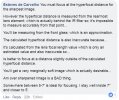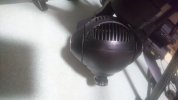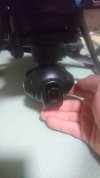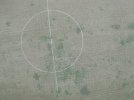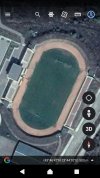Hello again fine folks! I have another question about the typhoon H480. I installed a Carolina Dronz 82 Deg FOV (I think it was based on the peau lens as a "knockoff"). I had it dialed in nicely at one point, but over the years and a few light crashes later I am finding it to be out of focus more than I like. I never really found a good way to focus as the lower res output on the ST 16 screen was always slightly fuzzy. Can anyone give me some pointers or procedures to dial in the focus to the optimal point of focus? I used a stop sign and put it out about 20 feet and turned it till I noticed it focus and kept track of how far I turned it till out of focus, then back the opposite direction till it was out of focus again, then split the difference, much like I do on a manual focus camera, but without a clear hi res output I cant tell. Also hard to turn the lens without hand cutting into the shot. As I recall the german installation video stopped short of how to focus it properly. Any help/suggestions would be much appreciated.
You are using an out of date browser. It may not display this or other websites correctly.
You should upgrade or use an alternative browser.
You should upgrade or use an alternative browser.
Focusing an aftermarket lens
- Thread starter Sure Bet Drone and Design
- Start date
The only way I know is to take a photo after you have it zeroed in. Then adjust in one direction, take another pic. Then the other direction and another pic.
The only way I know is to take a photo after you have it zeroed in. The adjust on direction, take another pic. Then the other direction and another pic
Thanks Steve-- I was hoping someone might have a better way, such a pain to take it out set it up adjust and take card out walk back into the house put it on my PC connected to my big screen, check it go back out, put card back in cgo3+, reboot drone etc over and over. I guess a better question would be how far out should a target be for best overall focus performance? If I could get it dialed in as much as possible first would be easier I would imagine. Problem is finding a focus guide big enough to see clearly from a distance at that resolution. I could barely make out a stop sign at 50' on the ST 16. If I connected st16 to my big screen tv in the house, how far away would a focusing target need to be?
Use some big screen device to make this. Install CGO3 application. Focus it. I'm using an old Sony tablet and the results are very well. The last CGO3 application works only on newer devices (I mean Android devices, here the iPhone are used a few), so ask here for an older version, someone will help you.Can anyone give me some pointers or procedures to dial in the focus to the optimal point of focus?
- Joined
- Jan 4, 2019
- Messages
- 490
- Reaction score
- 689
- Location
- Citrus Heights, CA
- Website
- yuneecskins.com
Hey John! You and I spoke on the phone last week (eric in San Antonio). This is my old handle on this forum. I worked with "Esteves" (He is a trip BTW, love the guy) directly on the phone after I installed the lens a few years ago, I tried his method, but to be honest, I did not get the best results for my purposes. I need hyper-sharp images at 100+ Feet, I get that for artistic imagery a bit of soft is nice, but I am doing orthomosaic for construction and photogrammetry, sharp and clean lines is the rule in my best case. If I focus that closely it is not sharp enough and the farther-off images are blurry. It seems counterintuitive to focus 5-7 feet away when I need to capture items 100-125' away. I ended up originally just adjusting as best I could at about 25' and then adjusted my best guess 4 or 5 times till I felt it was right. I was hoping someone might have a different method or trick. I used a poster with large text last time at about 25', but this time all I have access to is a stop sign. I would think ideally I would use something like a billboard with big text while in the air, but that would be a huge pain to take off get to distance then land adjust take off again check and then land adjust takeoff check it etc etc etc. I need to see something to get the focus adjusted while looking at it. I guess I am stuck with my old method of trial and error. While I have you, do you guys have any smaller FOV (larger MM size, I remember something like 8.85 mm?) lenses? I am still getting a bit of distortion still off the carolina lens, way better than the stock lens, but if there are any options I would be interested. I think I saw the Peau lens in your inventory, do you have the larger MM lens they manufactured by any chance? I get the magnification and the FOV would be too large for most users, but I think it would work for my use.
I have a camera with an 8mm lens. Bought from Aliexpress. The image is distorted a little, but every lens gives some distortion.
 www.aliexpress.com
www.aliexpress.com
M12 8mm lens 12MP - Buy M12 8mm lens 12MP with free shipping on AliExpress
Quality M12 8mm lens 12MP with free worldwide shipping on AliExpress
Thanks Valkin for your help. I like the prices, thanks for the link. Don't suppose you have any straight on photos of maybe a city block or buildings from that lens you can share with me? I have a client currently doing cad drawing on top of the aerial photos, and even with the carolina dronz lens, there is enough Fisheye distortion that it is a request of the client to get as much distortion out as possible. I never really noticed until I saw the straight lines over the photos. Hoping to see a sample before I go to the trouble of changing the lens. It was not a fun project changing out the first lens TBH. Hoping Carolina the mount will be the same size and I can just unscrew it, but what are the odds (rhetorical question). I think the Carolina Dronz 3.77 82° FOV lens was the same thread as the Peau, but I am hoping john at Skins or Esteves (Is he still around at all?) can confirm. I should probably break down and buy something new, but my h 480 has been a work horse for me and I know the platform well.I have a camera with an 8mm lens. Bought from Aliexpress. The image is distorted a little, but every lens gives some distortion.
M12 8mm lens 12MP - Buy M12 8mm lens 12MP with free shipping on AliExpress
Quality M12 8mm lens 12MP with free worldwide shipping on AliExpresswww.aliexpress.com
Can do some pictures for you. Probably today afternoon and I'll share them in the topic.Don't suppose you have any straight on photos of maybe a city block or buildings from that lens you can share with me?
Everything is not so simple. Probably the thread is glued. If you touch the sensor you have no more this sensor and so on.I can just unscrew it, but what are the odds
Magic in the name is M12, this means 12X0.5 mm thread.I think the Carolina Dronz 3.77 82° FOV lens was the same thread as the Peau
The new is not better...I should probably break down and buy something new
The distortion level doesn't matter itself. The problem is with non-linear information in the picture with possible gaps. In this case, a longer focus (smaller FOV) gives more details on the same size of the matrix. Your client should prepare a compensation pixel to pixel table depends on the height over the terrain. This is a costly procedure, but efforts are worthy.that it is a request of the client to get as much distortion out as possible
So, you can propose zero distortion, but you can't propose a known distortion. Let your client do the rest.
The distortion level doesn't matter itself. The problem is with non-linear information in the picture with possible gaps. In this case, a longer focus (smaller FOV) gives more details on the same size of the matrix. Your client should prepare a compensation pixel to pixel table depends on the height over the terrain. This is a costly procedure, but efforts are worthy.
So, you can propose zero distortion, but you can't propose a known distortion. Let your client do the rest.
Understood. That's essentially what client did in photoshop. Manually corrected the lens distortion but they mentioned it was a pain. Hoping to smooth their workflow a bit. For my photogrammetry though, we are talking thousands of photos from various altitudes and positions can't run a correction for each photo. There is a bit of forgiveness in the process settings, you can select a lens correction type but less distortion and more detail is a definite plus on the model processing in both quality of model and processing time.The distortion level doesn't matter itself. The problem is with non-linear information in the picture with possible gaps. In this case, a longer focus (smaller FOV) gives more details on the same size of the matrix. Your client should prepare a compensation pixel to pixel table depends on the height over the terrain. This is a costly procedure, but efforts are worthy.
So, you can propose zero distortion, but you can't propose a known distortion. Let your client do the rest.
Ups! Typo mistake. I want to say "you CAN NOT propose zero distortion, but you can propose a known distortion."So, you can propose zero distortion, but you can't propose a known distortion. Let your client do the rest.
Change the client.That's essentially what client did in photoshop.
Filename - YUN00008.jpg
ImageWidth - 4000
ImageLength - 3000
ImageDescription - \DCIM\100MEDIA\YUN00008.jpg
Make - YUNEEC
Model - CGO3+ 3.2.34(E)
Orientation - Top left
XResolution - 72
YResolution - 72
ResolutionUnit - Inch
Software - 3.2.34(E)
DateTime - 2021:10:03 10:50:26
YCbCrPositioning - Centered
ExifOffset - 322
ExposureTime - 1/679 seconds
FNumber - 2.80
ExposureProgram - Normal program
ISOSpeedRatings - 100
ISO Speed - 100
ExifVersion - 0230
DateTimeOriginal - 2021:10:03 10:50:26
DateTimeDigitized - 2021:10:03 10:50:26
BrightnessValue - 0
ExposureBiasValue - 0.00
MeteringMode - Average
FlashPixVersion - 0100
ColorSpace - sRGB
FileSource - DSC - Digital still camera
SceneType - A directly photographed image
CustomRendered - Normal process
ExposureMode - Auto
White Balance - Auto
SceneCaptureType - Standard
Contrast - Normal
Saturation - Normal
Sharpness - Normal
GPS information: -
GPSVersionID - 2.3.0.0
GPSLatitudeRef - N
GPSLatitude - 43 46 42.350159 (43.778431)
GPSLongitudeRef - E
GPSLongitude - 23 44 10.20336 (23.736168)
GPSAltitudeRef - Sea level reference
GPSAltitude - 50 m
ImageWidth - 4000
ImageLength - 3000
ImageDescription - \DCIM\100MEDIA\YUN00008.jpg
Make - YUNEEC
Model - CGO3+ 3.2.34(E)
Orientation - Top left
XResolution - 72
YResolution - 72
ResolutionUnit - Inch
Software - 3.2.34(E)
DateTime - 2021:10:03 10:50:26
YCbCrPositioning - Centered
ExifOffset - 322
ExposureTime - 1/679 seconds
FNumber - 2.80
ExposureProgram - Normal program
ISOSpeedRatings - 100
ISO Speed - 100
ExifVersion - 0230
DateTimeOriginal - 2021:10:03 10:50:26
DateTimeDigitized - 2021:10:03 10:50:26
BrightnessValue - 0
ExposureBiasValue - 0.00
MeteringMode - Average
FlashPixVersion - 0100
ColorSpace - sRGB
FileSource - DSC - Digital still camera
SceneType - A directly photographed image
CustomRendered - Normal process
ExposureMode - Auto
White Balance - Auto
SceneCaptureType - Standard
Contrast - Normal
Saturation - Normal
Sharpness - Normal
GPS information: -
GPSVersionID - 2.3.0.0
GPSLatitudeRef - N
GPSLatitude - 43 46 42.350159 (43.778431)
GPSLongitudeRef - E
GPSLongitude - 23 44 10.20336 (23.736168)
GPSAltitudeRef - Sea level reference
GPSAltitude - 50 m
So, the smaller FOV requests a higher altitude. The higher altitude means a great distance from the object and so on. The good news is that on a flat surface the picture is almost not distorted. This comes from the smaller FOV and so on. When I decide to prepare this camera my idea was to do some measurements but not in straight to the ground view. With a small FOV, this is only a wasted time.
The time in the EXIF is correct (GMT +2). The altitude and coordinates are not touched what means, they're almost correct...
Attachments
So I am guessing no way to run a polarized filter on that setup? During photogramery, reflections and high lights are not a good thing either.How it looks...View attachment 26597View attachment 26598
I also thought about some filters, like ND4 with linear polarization. This is not impossible but should be some type of slide which is directly caught to the lens.
This one is a good candidate.

 www.aliexpress.com
www.aliexpress.com
Cost-effective solution.
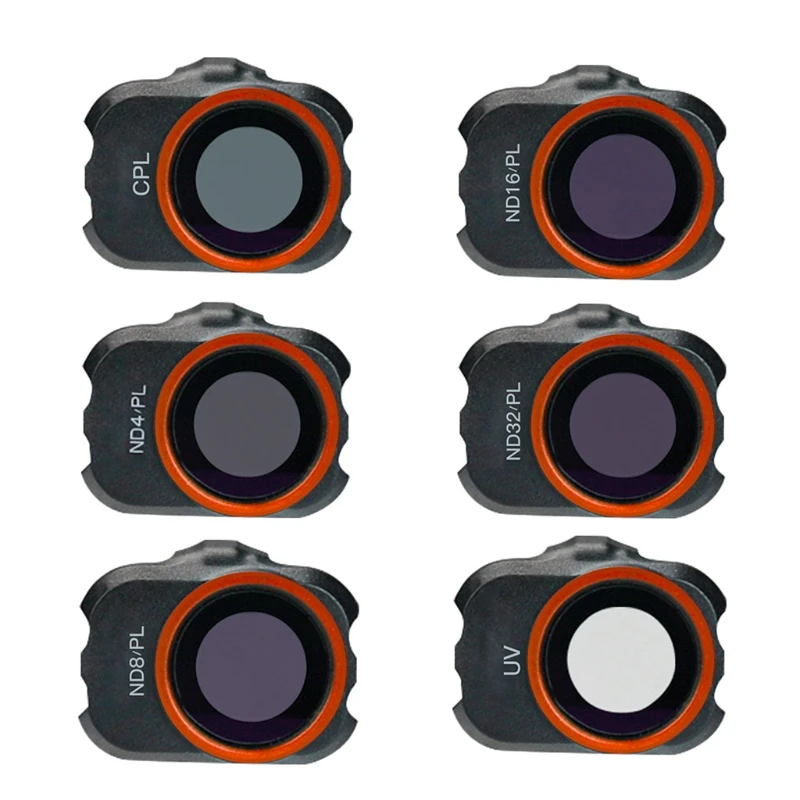
 www.aliexpress.com
www.aliexpress.com
I'll order one ND4/PL to try. Results will be here, but after a month or so. From China delivery is not so fast.

8.04US $ 17% OFF|FOTOFLY For MAVIC AIR Aluminum Frame Filter CPL ND4/8/16/32 UV Protect Lens Filters Kit For DJI Mavic Air Drone Camera Accessory|Drone Filter| - AliExpress
Smarter Shopping, Better Living! Aliexpress.com
Cost-effective solution.

6.27US $ |CPL/ND4 PL/ND8 PL/ND16 PL/ND32 PL/UV Lens Filter for Mavic Mini 1 2 SE Drone|Drone Filter| - AliExpress
Smarter Shopping, Better Living! Aliexpress.com
I'll order one ND4/PL to try. Results will be here, but after a month or so. From China delivery is not so fast.
Last edited:
@Sure Bet Drone and Design,Thanks Steve-- I was hoping someone might have a better way, such a pain to take it out set it up adjust and take card out walk back into the house put it on my PC connected to my big screen, check it go back out, put card back in cgo3+, reboot drone etc over and over. I guess a better question would be how far out should a target be for best overall focus performance? If I could get it dialed in as much as possible first would be easier I would imagine. Problem is finding a focus guide big enough to see clearly from a distance at that resolution. I could barely make out a stop sign at 50' on the ST 16. If I connected st16 to my big screen tv in the house, how far away would a focusing target need to be?
I've been working with the same pain for the last few days. @Steve Carr and @DoomMeister led me to a way to see the image directly on a PC screen while I am actually turning the lens. I'm still working on ways to make the process more effective, but here is the start of it:
1.) Download and Install VLC media player if you don't already have it - Official download of VLC media player, the best Open Source player - VideoLAN
2.) Power on your camera and give it time to start flashing green.
3.) Connect your Computer's WiFi to the camera: (Camera WiFi password is1234567890).
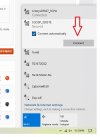
4.) Open VLC.
5.) Click on "Media", then on "Open Network Stream..." :
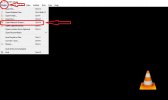
6.) Type "rtsp://192.168.42.1/live" into the box (without the quote marks):
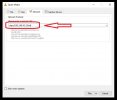
7.) Click on "Play":
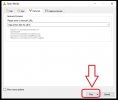
8.) Focus on something 50 times the focal length in front of the lens (about 8 Inches for CGo3+) for a good general start: I'm sure that isn't perfect, but I'm still figuring things out.
Note this is NOT a high resolution photo from the camera SD card. It is a screenshot from the PC, which is only receiving the 720p signal from the camera WIFI.
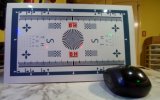
(This particular target is from B&H Photo) https://static.bhphotovideo.com/explora/explora/sites/default/files/bandh-test-target.jpg
The above focus provided this appearance from 120 Ft altitude. (The camera focus has been improved since, but not checked in flight)
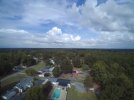
Similar threads
- Replies
- 0
- Views
- 240
- Replies
- 1
- Views
- 158
- Replies
- 12
- Views
- 699




